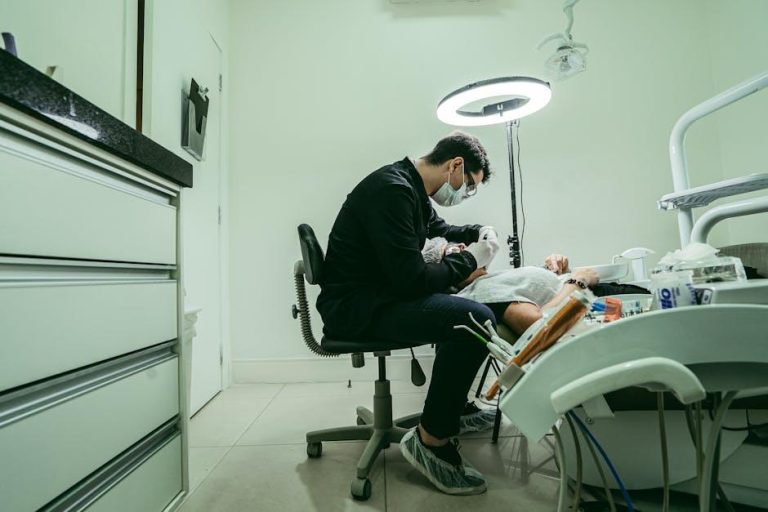
What Qualifies As A Dental Emergency? – Texas A&M Comprehensive Guide
Dental emergencies can strike unexpectedly, causing pain and distress that requires immediate attention. But what exactly qualifies as a dental emergency? Understanding when to seek urgent care, especially in the Texas A&M community, can make a huge difference in preserving your oral health. This guide will clarify the types of dental problems that count as emergencies, offer practical advice for handling them, and explain how you can get timely treatment near Texas A&M.
Understanding Dental Emergencies: What Counts?
Not every toothache or discomfort is a dental emergency. A dental emergency is any situation involving the teeth, gums, or mouth that requires immediate medical attention to save a tooth, stop ongoing tissue bleeding, or relieve severe pain. Timely intervention is crucial for these cases to avoid complications and permanent damage.
Common Types of Dental Emergencies
- Severe Toothache: Intense pain that persists and worsens, often indicating infection or abscess.
- Knocked-Out Tooth (Avulsed Tooth): A tooth displaced entirely out of its socket, requiring rapid action to save it.
- Cracked or Broken Teeth: Teeth with visible fractures or breaks causing pain or sensitivity.
- Lost Filling or Crown: Exposing a vulnerable tooth surface to damage or pain.
- Abscess or Gum Infection: Swelling, pus, and severe pain signaling serious infection needing urgent care.
- Uncontrollable Bleeding: Bleeding in the mouth that doesn’t stop after 10-15 minutes of pressure.
- Soft Tissue Injuries: Deep cuts or injuries to the tongue, cheeks, gums, or lips.
Dental Emergency vs. Non-Emergency: How to Tell the Difference
Sometimes it can be tough to know when to rush to an emergency dentist or wait for a regular appointment. Here is a quick comparison to help you decide:
| Dental Emergency | Non-Emergency Dental Issue |
|---|---|
| Severe pain or swelling | Mild to moderate sensitivity |
| Knocked-out or loose teeth | Loose dentures or braces |
| Visible fractures with pain | Minor chips without pain |
| Bleeding that won’t stop | Minor gum irritation or bleeding |
| Signs of infection (fever, swelling) | Scheduled cleanings/check-ups |
Why Prompt Care for Dental Emergencies Near Texas A&M Matters
Living in the Texas A&M area, you have access to multiple dental professionals experienced in emergency care. Prompt treatment of dental emergencies helps:
- Prevent infections from spreading beyond the oral cavity.
- Save natural teeth that might otherwise need extraction.
- Minimize pain and discomfort quickly.
- Avoid costly future dental procedures caused by untreated issues.
Practical Tips for Handling a Dental Emergency
Before you reach your emergency dentist near Texas A&M, here are some useful steps to manage your dental issue safely:
For a Knocked-Out Tooth:
- Handle the tooth by the crown, not the root.
- Rinse gently with water if dirty; avoid scrubbing.
- Attempt to place it back in the socket carefully.
- If that’s not possible, store the tooth in milk or a tooth preservation kit.
- Visit a dentist immediately — ideally within 1 hour.
For a Toothache:
- Rinse your mouth gently with warm salt water.
- Use over-the-counter pain relief if needed.
- Apply cold compresses to reduce swelling.
- Avoid hot, cold, or sweet foods.
- Contact your dentist promptly to prevent worsening.
For Bleeding or Soft Tissue Injuries:
- Apply gentle pressure with a clean cloth or gauze.
- Use cold compresses to reduce swelling.
- Seek emergency dental help if bleeding persists.
Real Case Study: Emergency Dental Care at Texas A&M
One Texas A&M student experienced a sudden, severe toothache after sports practice. Recognizing the urgency, she contacted the university’s emergency dental clinic. The dentist quickly diagnosed a dental abscess and provided immediate treatment including drainage and antibiotics, saving the tooth and preventing hospitalization. This case highlights the importance of identifying dental emergencies and accessing prompt care in the Texas A&M area.
How to Find Emergency Dental Care Near Texas A&M
If you or someone you know experiences a dental emergency, consider the following resources near Texas A&M:
- Texas A&M University Dental Clinic: On-campus dental students and professionals provide urgent care to the community.
- Local Emergency Dental Offices: Many clinics offer 24/7 or after-hours emergency services.
- Hospital Emergency Rooms: For trauma or uncontrollable bleeding, a hospital is a quick access point.
Always make sure to call ahead and describe the emergency clearly to receive proper instructions before arriving.
Benefits of Knowing Dental Emergencies Early
Being aware of what qualifies as a dental emergency offers several advantages:
- Peace of Mind: You’ll know when to seek urgent care versus when to wait.
- Financial Savings: Avoid costly complications from delayed treatment.
- Better Oral Health: Timely treatment helps prevent tooth loss and infections.
- Quick Pain Relief: Managing emergencies effectively reduces discomfort fast.
Conclusion
Dental emergencies require swift recognition and action, especially in the Texas A&M community where resources are available for quick treatment. Severe pain, knocked-out teeth, uncontrolled bleeding, and infections all qualify as dental emergencies that deserve immediate professional evaluation. By understanding the signs and following practical tips to manage emergencies, you can protect your smile and oral health from long-term damage. Remember, when in doubt, contact your local Texas A&M emergency dentist right away to ensure rapid and effective care.


